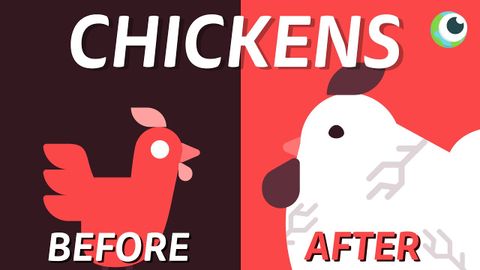ニワトリの科学。 (THE SCIENCE OF CHICKENS.)
Summer が 2021 年 01 月 14 日 に投稿  この条件に一致する単語はありません
この条件に一致する単語はありませんUS /mɪˈtæbəˌlɪzəm/
・
UK /məˈtæbəlɪzəm/
US /dɪˈvɛləp/
・
UK /dɪ'veləp/
- v.t./i.展開する;開発する;発達する;現像する;発症する;磨く
US /məˈnɪpjəˌlet/
・
UK /mə'nɪpjʊleɪt/
- v.t.操る;操作する;操作する;操作する;改ざんする
US /əˈprɑksəmɪtlɪ/
・
UK /əˈprɒksɪmətli/
エネルギーを使用
すべての単語を解除
発音・解説・フィルター機能を解除

